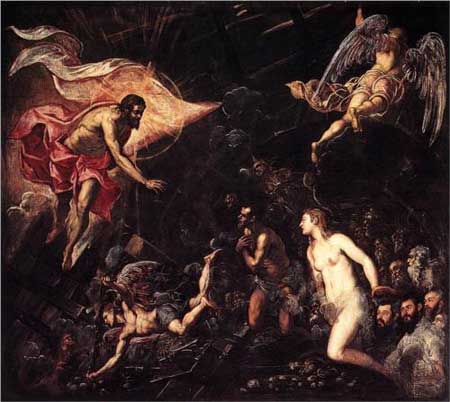
Contents
- Judeo-Christian Underworld
- Christ’s Descent Into Hell
- 1 Pet 3:18-22
- Ephesians 4:7-11
- Other New Testament Passages
Descent myths are not uncommon in the mythos of antiquity. Early stories range from an Egyptian papyrus of the first-century CE. describing the descent of the high priest of Memphis, Setne Khamuas (c. 1250 BCE) to the underworld (Duat), where he saw the judgment of souls and the different corridors of Hades; to Greek stories about Ishtar’s descent into Hades to rescue her dead husband Tammaz, Orpheus’ visit to the underworld to rescue Eurydice and Heracles’ task of bringing Cerberus, the watchdog of Hades, to the world of the living; to Jewish stories describing visits to Sheol such as in the Book of Enoch and the Book of the Secrets of Enoch. There are even myths in Hinduism and Buddhism such as those in the Marabharata and the Ramayana telling of a descent in order to free the damned.
Visits To The Judeo-Christian Underworld
Throughout the evolution of Judaism and Christianity from the second temple period to the first few centuries of the common era, the concepts of the underworld and of visitations to the underworld usually associated with a Messianic figure changed dramatically. Old Testament passages, such as Hosea 13:14 which states,
“Shall I deliver them from the power of the nether world? Shall I redeem them from death?”
and Isaiah 35:10, which implies that when the Messiah comes, he will redeem those who have died so that they, too, can enter Paradise.
“Those whom the LORD has ransomed will return and enter Zion”
The earliest visit to the world of the dead in Jewish lore is found in the apocryphal Book of Enoch (1 Enoch), which dates in the mid-second century BCE, in which Enoch is taken on two guided tours of the earth and Sheol by the angels. During Enoch’s first journey, Enoch is taken to a place ‘without the heavenly firmament above it or earthly foundation under it or water. There was nothing on it – not even birds – but it was a desolate and terrible place’ (1 En 18:12). This place is to serve as a prison for the ‘spirits of the angels who have united themselves with women’ (1 En 19:1).
During his second journey, Enoch learns of the places where the “spirits of the dead” will be kept until the day of judgment (1 En 22:9-11) The angel, Rufael , who is guiding Enoch explains that this is to keep the souls of the righteous separate from the wicked. Four places are distinguished in accordance with the ‘four beautiful corners’ of 1 En 22:2: a) where the righteous are kept (22:9) b) where sinners who were not punished on earth are kept (22:10-11) c) where ‘those who make the suit (and) those who disclose concerning destruction’ are kept (22:12) d) where sinners whose souls ‘will not be killed on the day of judgment, but will not rise’ are kept (22:13).
This passage gives an early account not only of a descent into the underworld, but also an early picture of how some apocalyptic traditions viewed the place where souls of the dead reside. Already, there is a tradition in which the souls of the righteous and the souls of the wicked are separated, however the details of the afterlife are brief. In contrast, later apocalypses such as the Apocalypse of Peter (dated to around the time of the Bar Kokhba revolt in 132-135) show a much more developed idea of the underworld where sinners are violently punished for their wrongdoings. The text presents a prophecy by Jesus to Peter about the resurrection, the day of judgment, and a long, detailed description of the different types of punishment designated for each of twenty-one types of sinners, who will remain in their assigned punishments until the righteous intercede for them through prayer. Only then will they be able to join the elect in Christ’s eternal kingdom.
Christ’s Descent Into Hell

The idea of Christ’s descent into hell is a predominant teaching in modern church theology. However, the concept of Christ’s descent to the dead is not found in the teachings of the Gospels, and probably evolved as a later teaching. The principle of the doctrine is that through Christ’s descent, death and the Underworld have been made powerless. Christ had transferred those souls, either all imprisoned there or only those who believed during his preaching to them depending upon the source referenced, to Paradise.
The doctrine did not appear in credal form until 359 CE, when it was mentioned in the Fourth Formula of Sirmium, which alluded to Job 38:17, stating that Christ “died, and descended to the underworld, and regulated things there, Whom the gatekeepers of hell saw and shuddered.” Christians may also be familiar with the doctrine as incorporated in the Apostle’s Creed:
He suffered under Pontius Pilate, was crucified, died, and was buried. He descended to the dead. On the third day he rose again. He ascended into heaven, and is seated at the right of the Father. He will come again to judge the living and the dead.
This early descent myth had several variations to it:
- that of the Hoellensturmung, in which Christ storms the gates of Hell by violence
- Christ sets free some or all of the dead from the power of Hell, and
- that Christ preaches to either all or some of the dead.
These variations were also combined, with the most usual combination being the first and second. Yet, this descent into hell has very few references within the New Testament scripture. Most of our theology about a descent comes from later writings by Church Fathers and non-canonical scriptures.
The Earliest Account of Christ’s Descent: 1 Pet 3:18-22
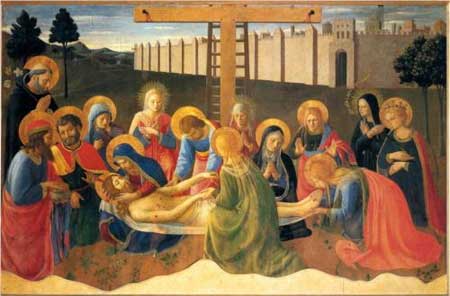
The most significant biblical writing concerning the Descent is 1 Pet 3:18-22:
For Christ also died for sins once for all, the just for the unjust, so that He might bring us to God, having been put to death in the flesh, but made alive in the spirit; in which also He went and made proclamation to the spirits now in prison, who once were disobedient, when the patience of God kept waiting in the days of Noah, during the construction of the ark, in which a few, that is, eight persons, were brought safely through the water. Corresponding to that, baptism now saves you—not the removal of dirt from the flesh, but an appeal to God for a good conscience—through the resurrection of Jesus Christ, who is at the right hand of God, having gone into heaven, after angels and authorities and powers had been subjected to Him. 1 Peter 3:18-22 (NASB)
There have been many debates about what Christ preaching “to the spirits now in prison, who once were disobedient” (1 Pet 3:19) refers to. In the context of the entire passage (3:18-22), many biblical scholars interpret it as a reference to the Fall of the Watchers story in 1 Enoch; however, it could be a reference to the souls of a specific group of people or to people in general who lived at the time of Noah.
Where the spirits are imprisoned and when Christ preached to them is also addressed. The passage seems to be in connection with Jesus’ death; however, it does not designate whether the preaching took place during the time between Jesus’ death on the cross and the resurrection or during or after the resurrection. If the spirits in prison were in the underworld (in reference to 2 Pet. 2:4 and Jude 6), it is most likely that he preached to them while he was dead. However, if the spirits were imprisoned somewhere else (in reference to the Book of the Secrets of Enoch, which has the fallen angels/watchers imprisoned in either the second heaven or the fifth heaven) the preaching most likely occurred during Christ’s ascension.
Finally, there may be a connection with the Descent in 3:19 with the baptism presented in 3:21-22, in that “the resurrection of Christ gives Baptism power to rescue the Christian that he may have eternal life with God.” This connection of Baptism with the Descent becomes more developed in later Descent traditions such as the Odes of Solomon.
While it is possible that the term ‘spirits in prison’ refers to the fallen angels, it may also be a reference to the wicked men of Noah’s generation. In this interpretation, Christ proclaimed his victory over sin and death to those in Sheol, thus referring to the Descensus Ad Inferos interpretation.
Interestingly, Augustine saw the passage not as a reference to Christ’s Descent, but referring to a pre-existent Christ who appeared in Spirit form to the disobedient of the time of Noah. These spirits were said to be ‘in prison’ because they were imprisoned in their own ignorance. (Epistle 151)
The Descent in Paul’s Writings
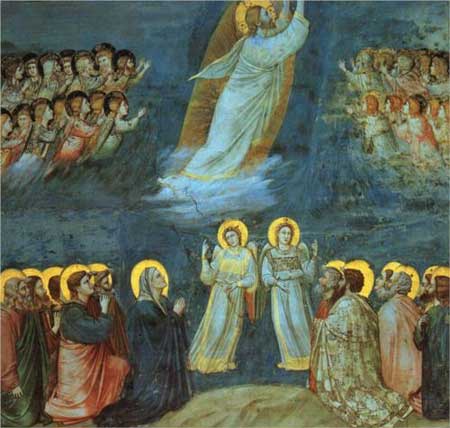
The Pauline corpus contains a few verses possibly implying a Descent, the most prominent is Ephesians 4:7-11
But to each one of us grace was given according to the measure of Christ’s gift. Therefore it says,
“WHEN HE ASCENDED ON HIGH,
HE LED CAPTIVE A HOST OF CAPTIVES,
AND HE GAVE GIFTS TO MEN.”(Now this expression, “He ascended,” what does it mean except that He also had descended into the lower parts of the earth? He who descended is Himself also He who ascended far above all the heavens, so that He might fill all things.) – Ephesians 4:7-11 (NASB)
This passage is generally interpreted in one of three ways:
- as a descent into hell, in which Christ either pursued the evil cosmic powers ‘to the depths of Darkness’ in order to obtain victory over them or in relation to 1 Pet 3:19 where Christ preached to the spirits in prison or as simply referring to Christ’s physical death without mentioning what he did during that time
- as the Incarnation of Christ on earth and his ascension into heaven or as a reference to the Incarnation in gnostic terminology , or
- as the Descent of the Spirit, in which the previously exalted Christ bestowed gifts upon his church.
The passage was associated with a descent into hell in writings of some of the early Church fathers. For example, Tertullian most likely was influenced by the passage in his De anima 55:2 where he makes reference to Christ descending “into the lower regions of the earth” to “make the patriarchs and prophets partakers of himself” before ascending “into the heights of heaven.”
The Descent in other New Testament Writings
Matthew – Matthew 27:52-53 may be related to the Descent myth, in that Jesus released the OT saints from the realm of the dead. The passage, however, makes no explicit reference to the activities of Jesus during his death, and is more concerned with expressing the eschatological significance of Jesus’s death, which overcomes the power of death.
The tombs were opened, and many bodies of the saints who had fallen asleep were raised; and coming out of the tombs after His resurrection they entered the holy city and appeared to many. – Matthew 27:52-53 (NASB)
Acts – Acts 2:24-32 (cf. 13:34-37) states of the resurrection: ‘But God raised him up, releasing him from the throes of death, because it was impossible for him to be held by it’ (Acts 2:24). Allusions to Ps 16:8-11 and 116:3 are used to interpret the passage as Christ being delivered from the power of death, as well as from the physical corruption of death.
Hebrews – There is a possible reference to the Descent in the Epistle to the Hebrews. Heb 13:20 describes how God brought Christ “up from the dead.” Hebrews also describes the symbolism of Christ’s sacrificial death. The Epistle mentions that Christ became the “source of eternal salvation for all who obey him,” (5:9) and that after Christ’s death “the holy Spirit shows that the way into the sanctuary had not yet been revealed while the outer tabernacle still had its place.” (9:8) This could be a reference to Christ’s Descent to free all those who had died but could not enter Paradise until He showed them the way.
Revelation – Finally, Revelation 1:18 attributes Christ as saying, “Once I was dead, but now I am alive forever and ever. I hold the keys to death and the netherworld.” This passage presupposes that the gates to the netherworld have for the first time released a man from the realm of the dead, and emphasizes Christ’s unlimited power over death and the underworld as represented by his possession of the keys.
While each of these passages may refer to Christ’s Descent Into Hell, it is not explicitly stated within the New Testament. As Richard Bauckham wrote in his book, The Fate of the Dead, “It is striking that in perhaps the New Testament’s closest contact with the development of the theme of the descent to Hades in other early Christian literature, the interest is exclusively in the significance of the death of Christ, not in any activity of Christ in Hades.”
References
- Collins, J.J. (1998) The Apocalyptic Imagination: An Introduction to Jewish Apocalyptic Literature
- MacCulloch, J.A. (1930) The Harrowing of Hell: A Comparative Study of an Early Christian Doctrine
- Danielou, Jean. (1964) The Theology of Jewish Christianity
- Charlesworth, J.H. (1998) Critical Reflections on the Odes of Solomon
- Bauckham, R., (1998) The Fate of the Dead

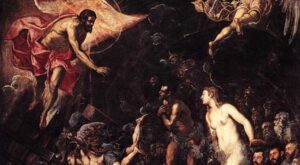
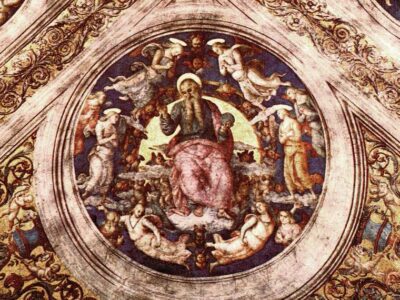
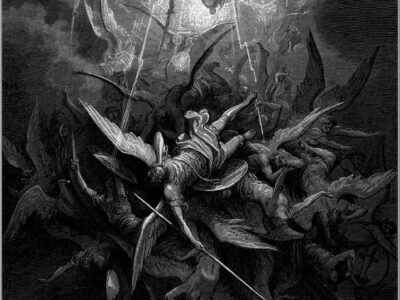
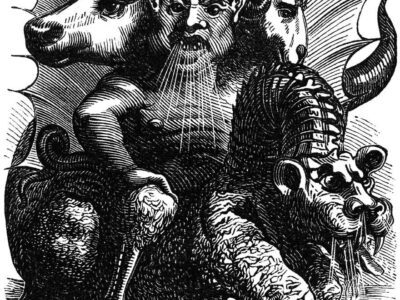
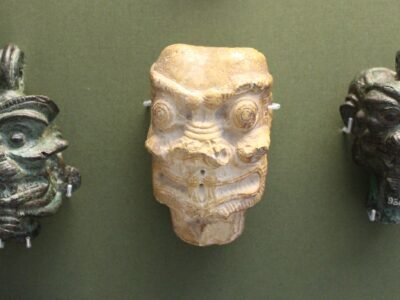
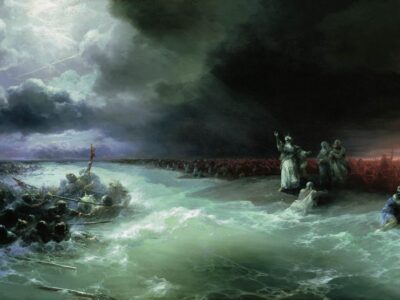
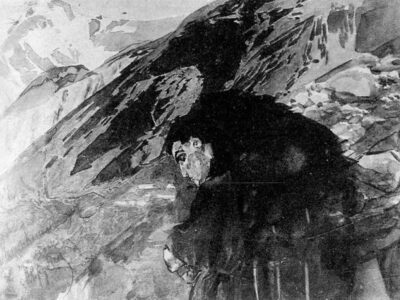
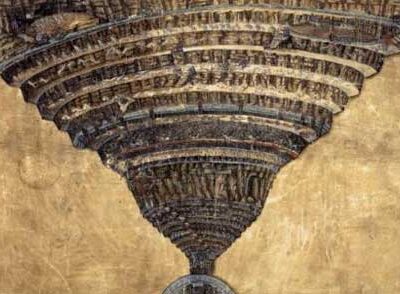
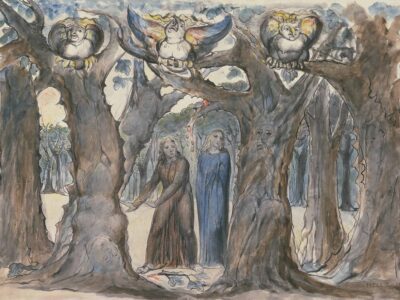

 Perceptions of Evil – What Makes Someone Evil?
Perceptions of Evil – What Makes Someone Evil?